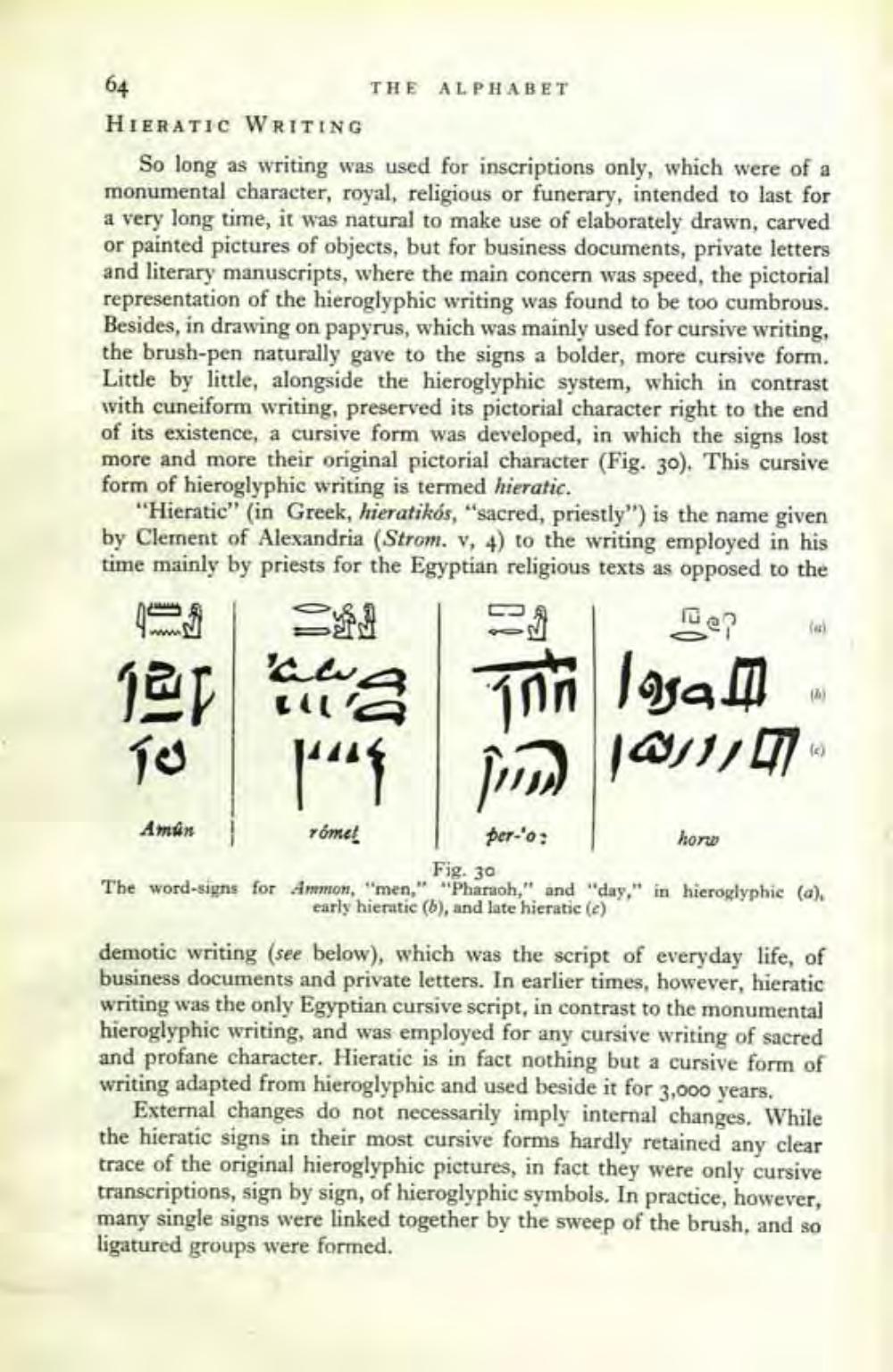________________
THE ALPHABET
HIERATIC WRITING
So long as writing was used for inscriptions only, which were of a monumental character, royal, religious or funerary, intended to last for a very long time, it was natural to make use of elaborately drawn, carved or painted pictures of objects, but for business documents, private letters and literary manuscripts, where the main concern was speed, the pictorial representation of the hieroglyphic writing was found to be too cumbrous. Besides, in drawing on papyrus, which was mainly used for cursive writing, the brush-pen naturally gave to the signs a bolder, more cursive form. Little by little, alongside the hieroglyphic system, which in contrast with cuneiform writing, preserved its pictorial character right to the end of its existence, a cursive form was developed, in which the signs lost more and more their original pictorial character (Fig. 30). This cursive form of hieroglyphic writing is termed hieratic.
"Hieratic" (in Greek, hieratikos, "sacred, priestly") is the name given by Clement of Alexandria (Strom. V, 4) to the writing employed in his time mainly by priests for the Egyptian religious texts as opposed to the
125
g
inn losa
Amús rómet per-'o;
hor
Fig. 30 The word-signs for Ammon,"men," "Pharaoh," and "day," in hieroglyphie (a).
carly hieratic (b), and late hieratic (c)
demotic writing (see below), which was the script of everyday life, of business documents and private letters. In earlier times, however, hieratic writing was the only Egyptian cursive script, in contrast to the monumental hieroglyphic writing, and was employed for any cursive writing of sacred and profane character. Hieratic is in fact nothing but a cursive form of writing adapted from hieroglyphic and used beside it for 3,000 years,
External changes do not necessarily imply internal changes. While the hieratic signs in their most cursive forms hardly retained any clear trace of the original hieroglyphic pictures, in fact they were only cursive transcriptions, sign by sign, of hieroglyphic symbols. In practice, however, many single signs were linked together by the sweep of the brush, and so ligatured groups were formed.




